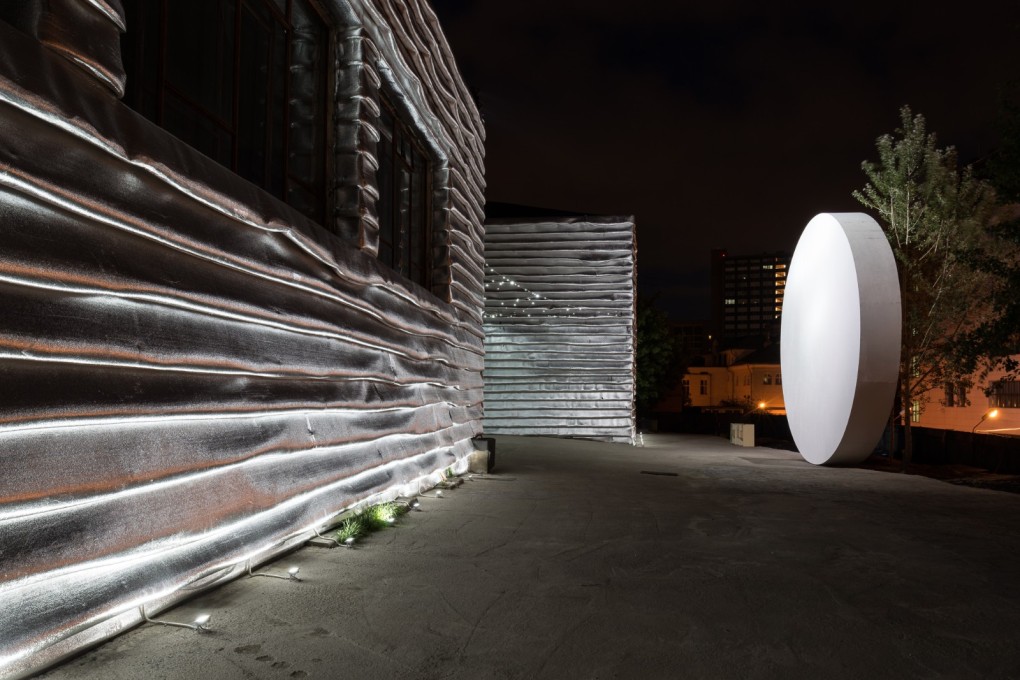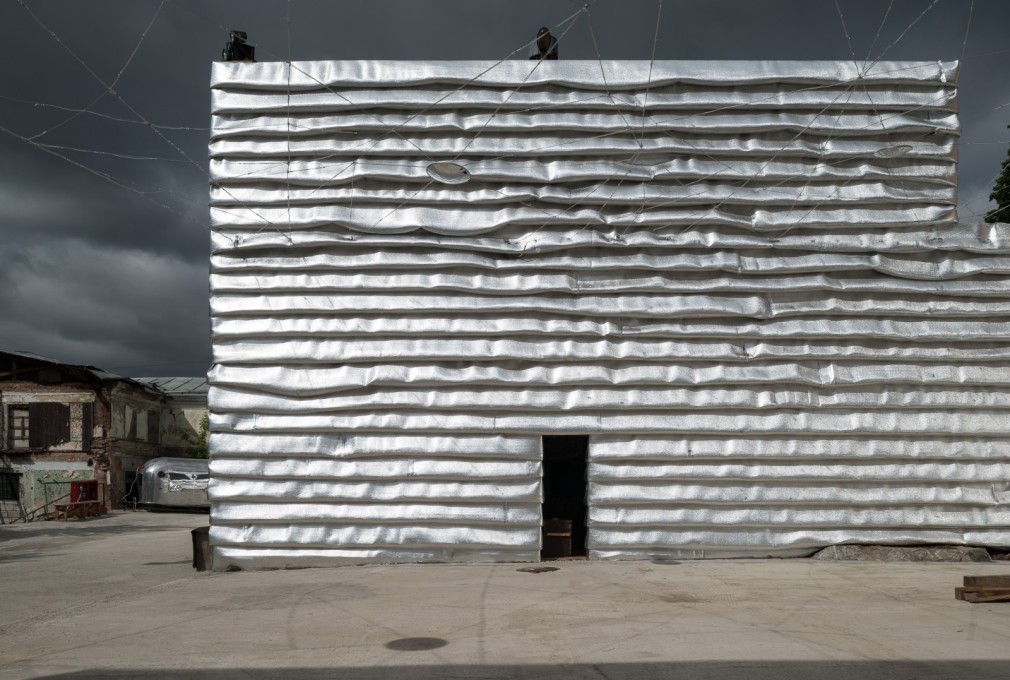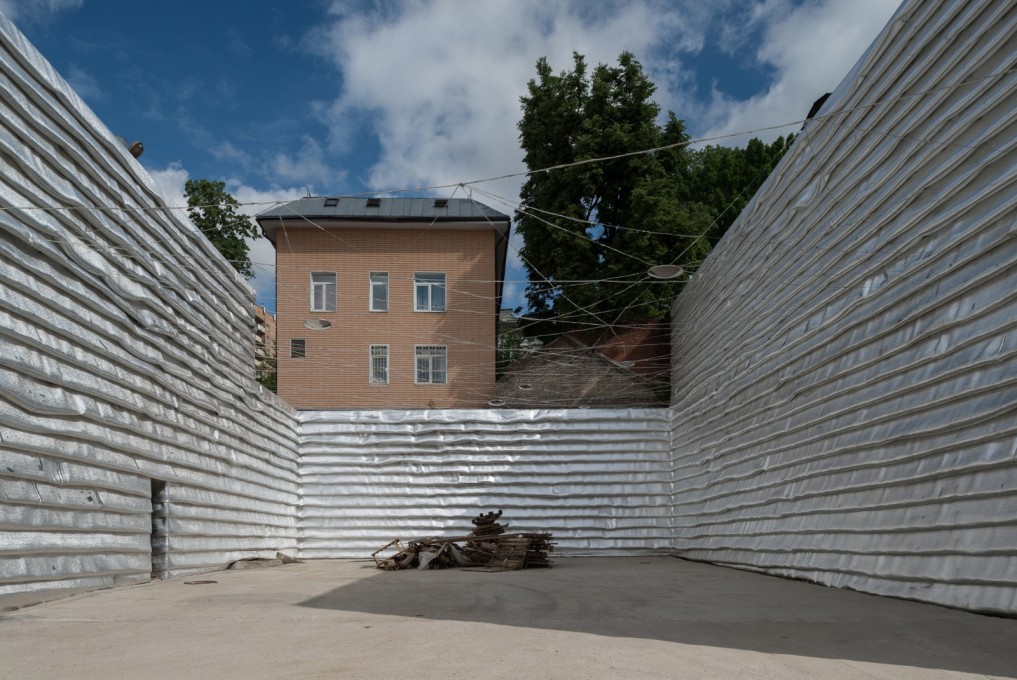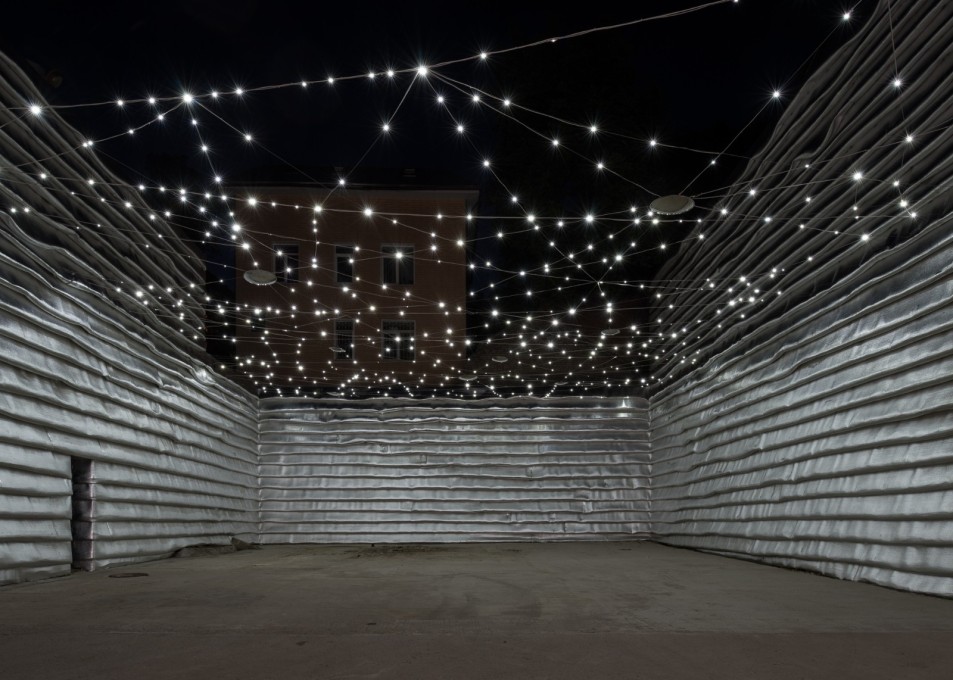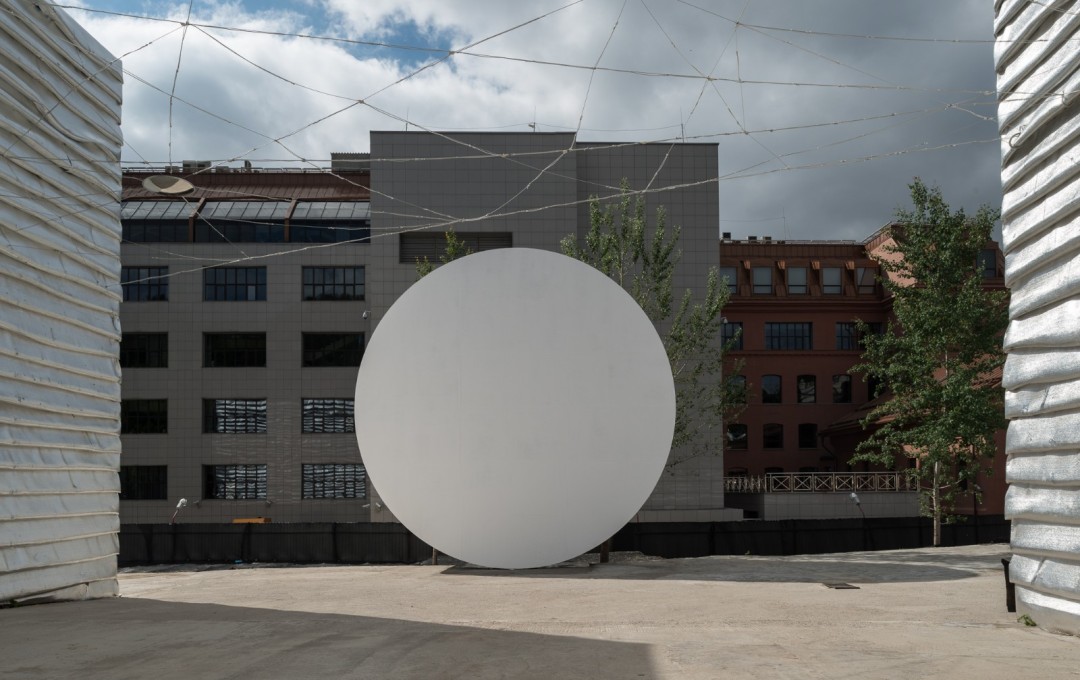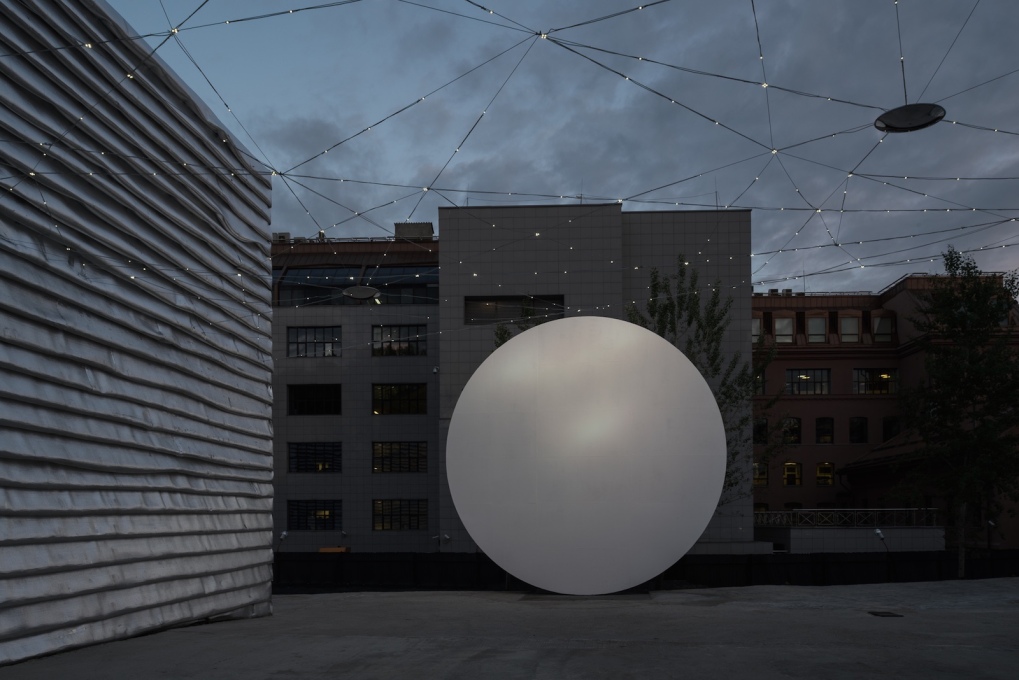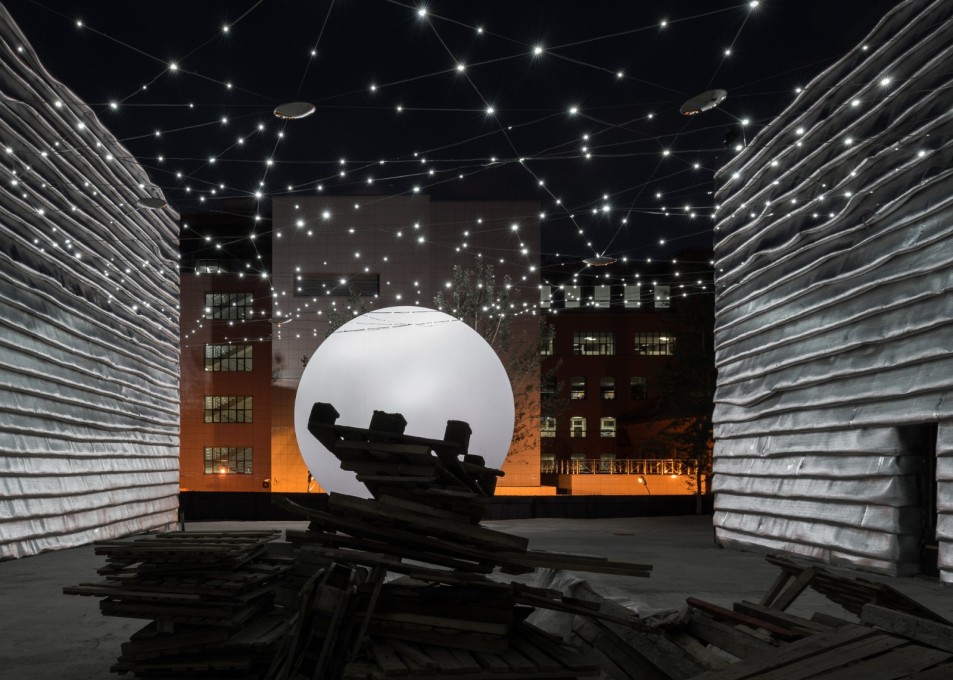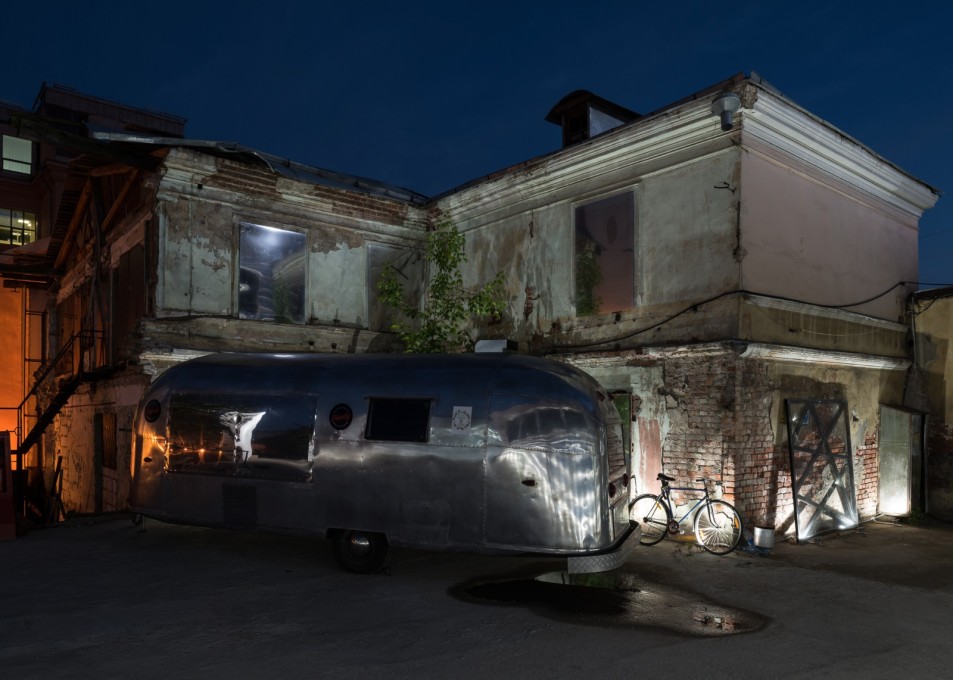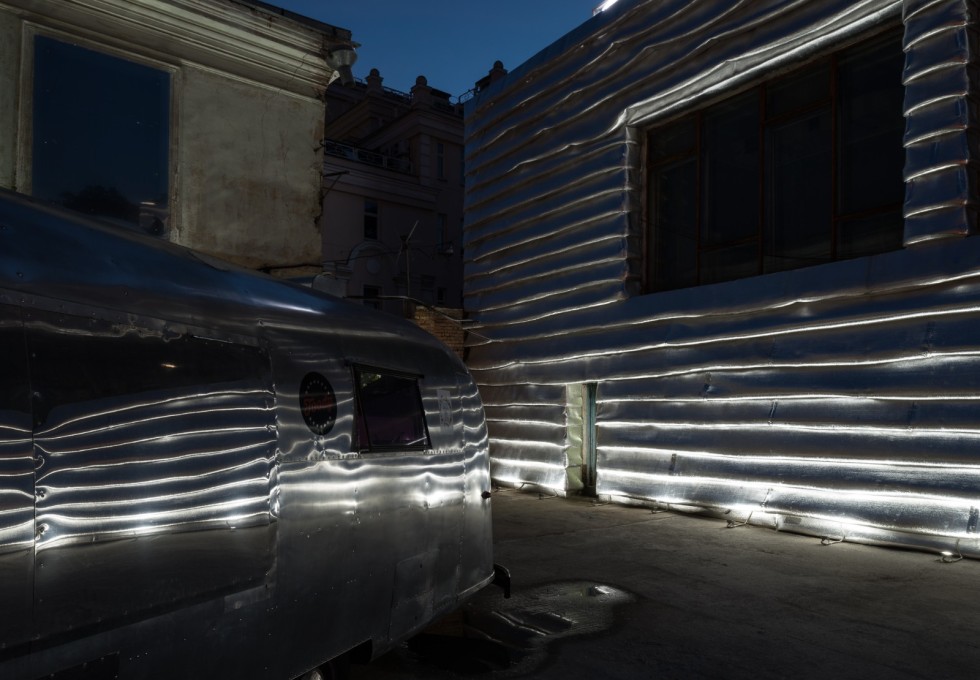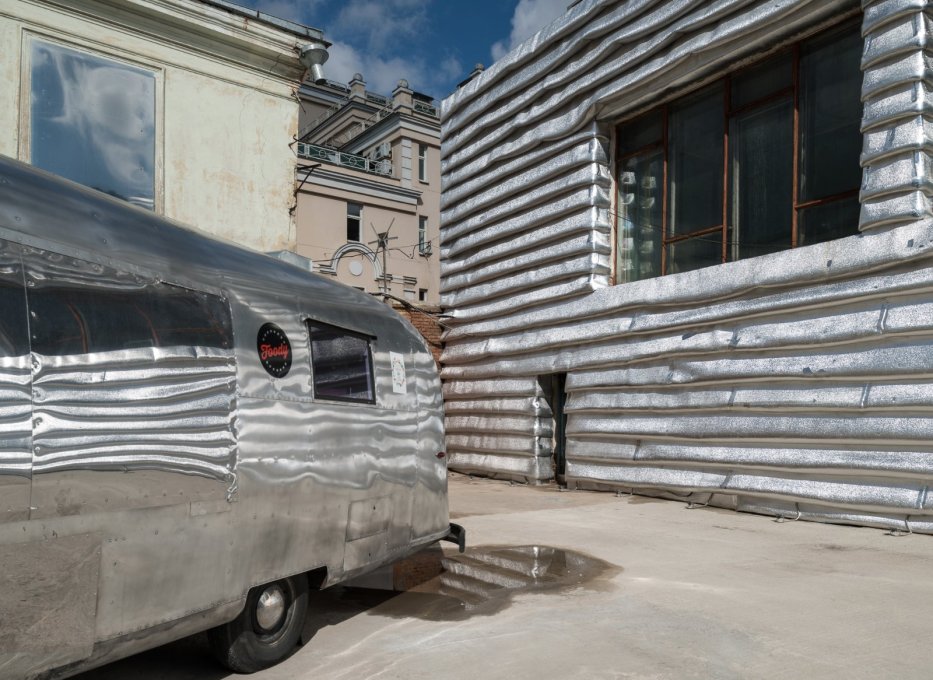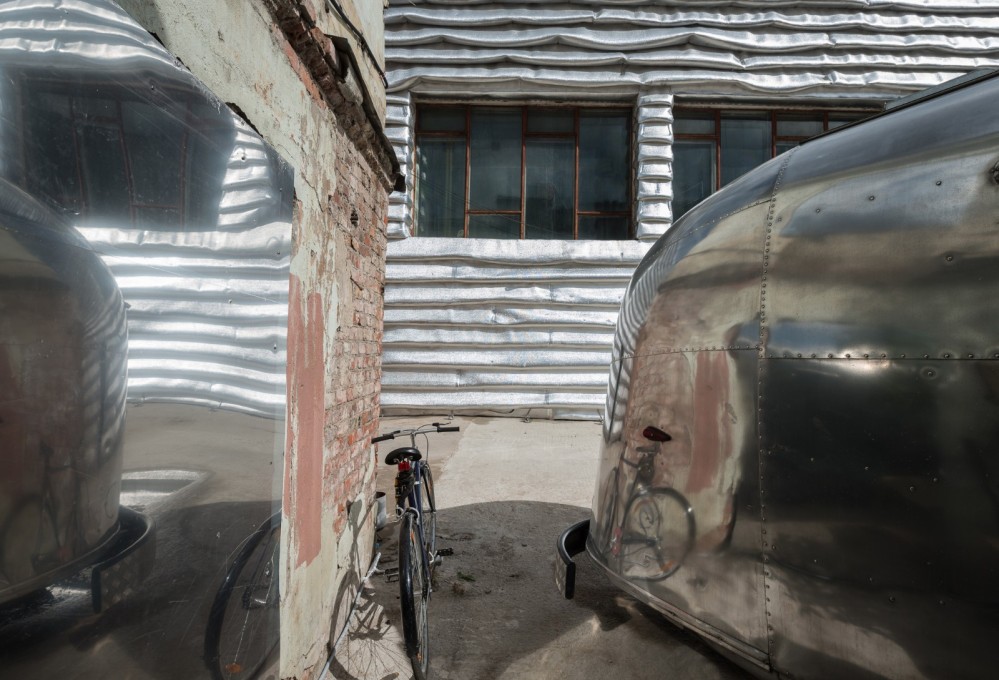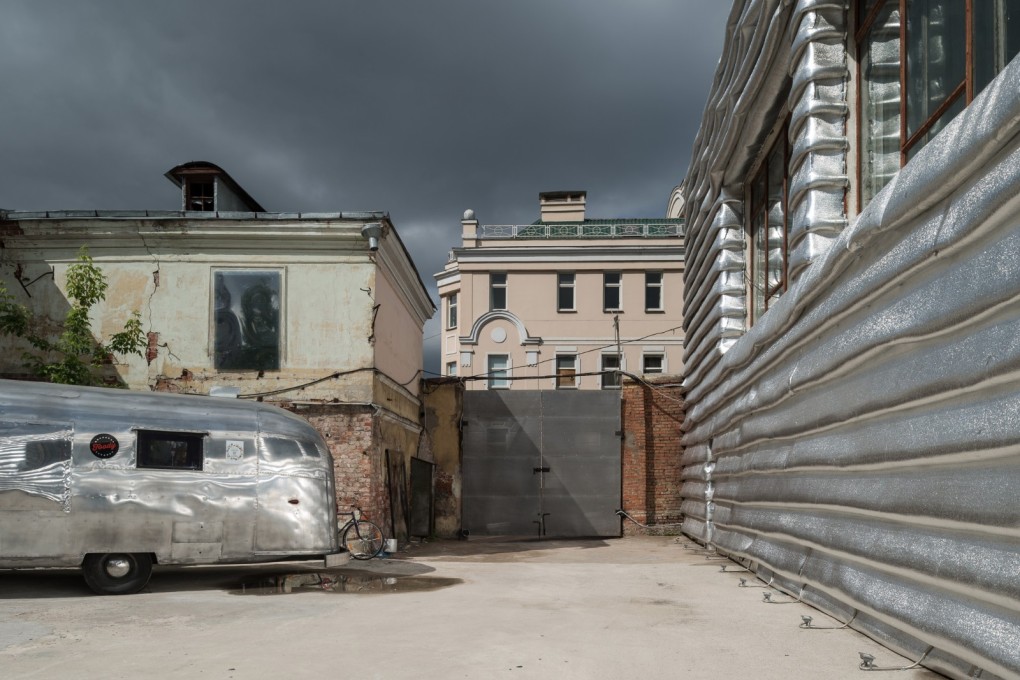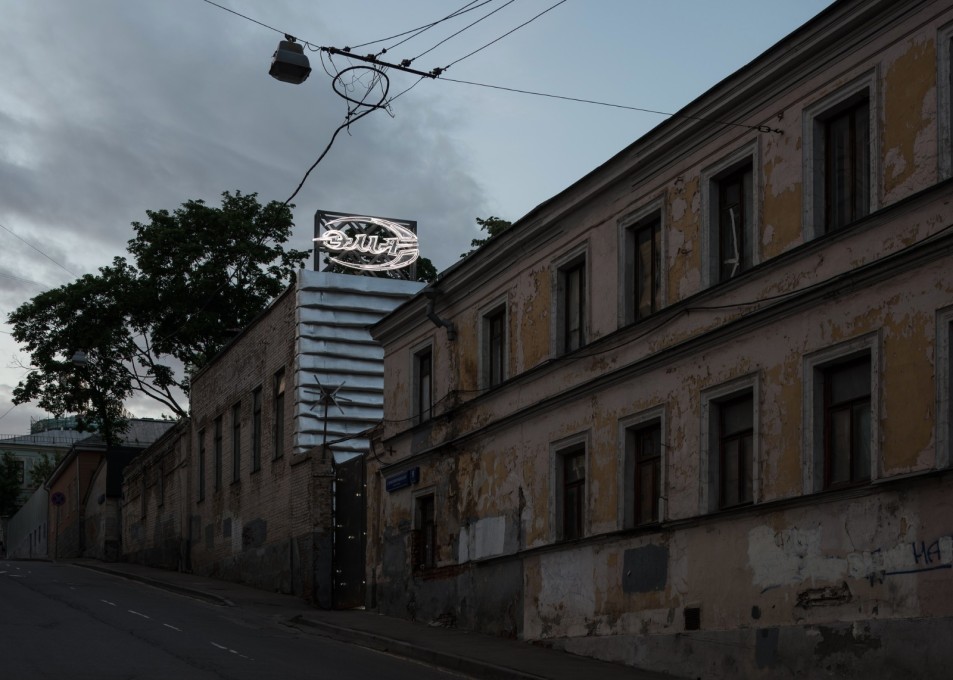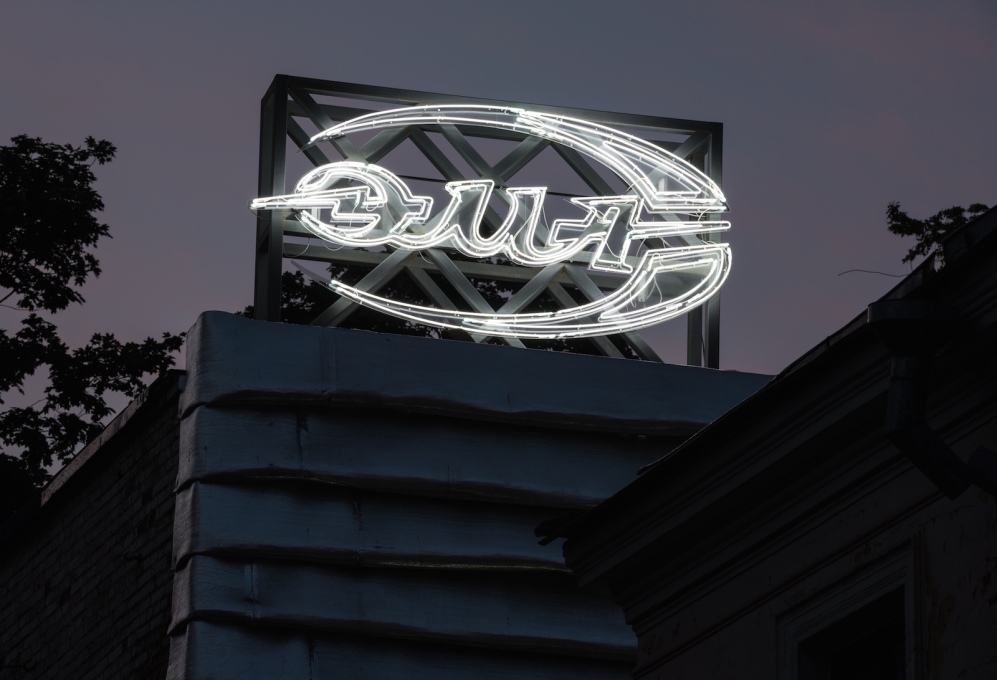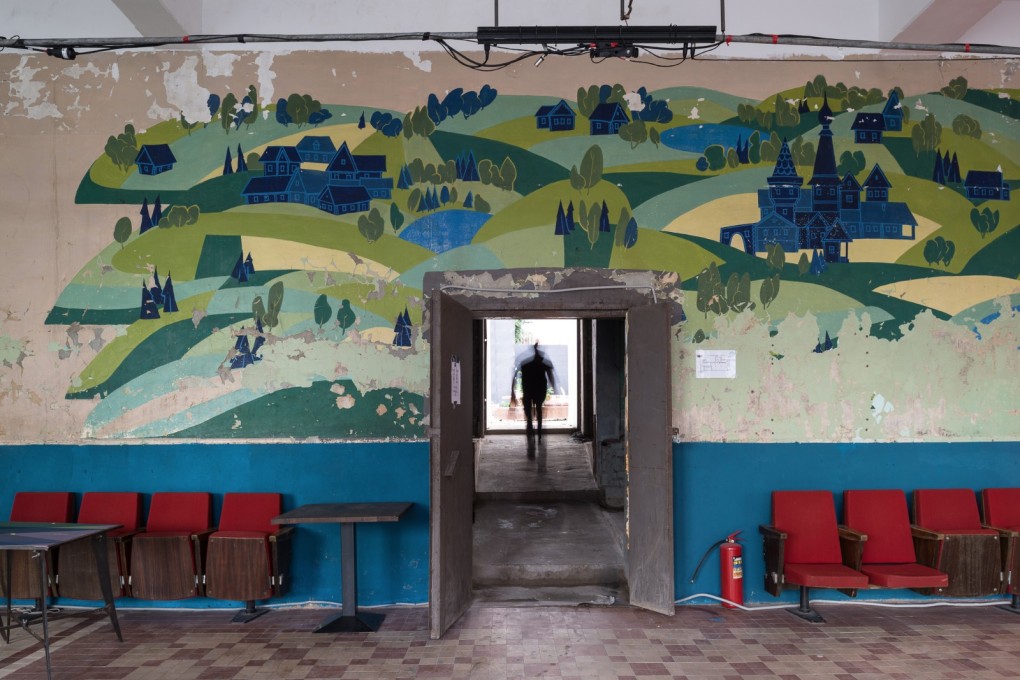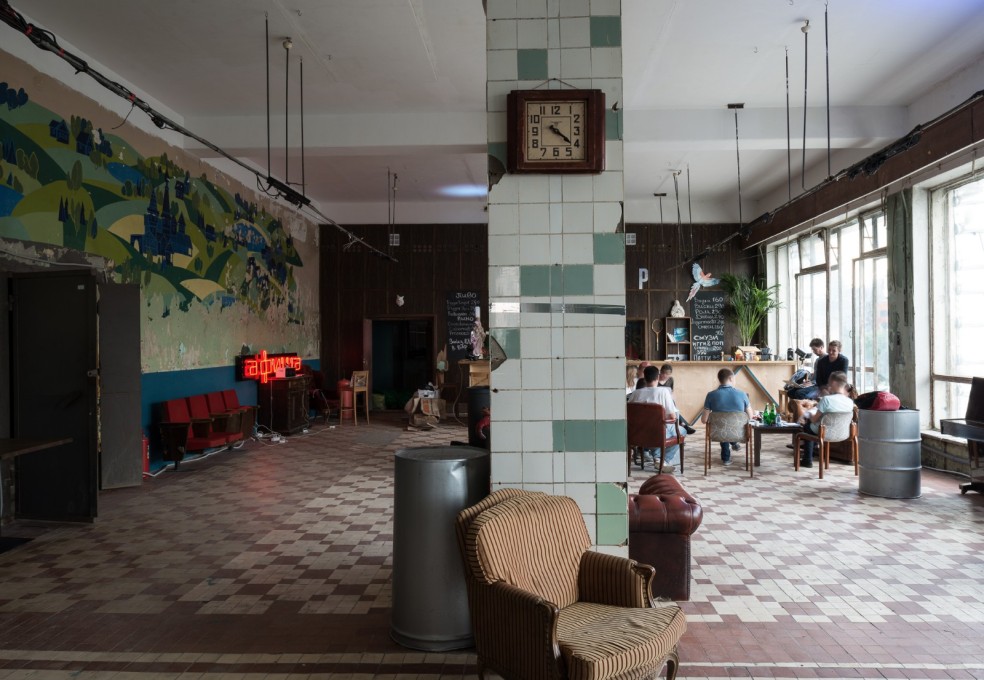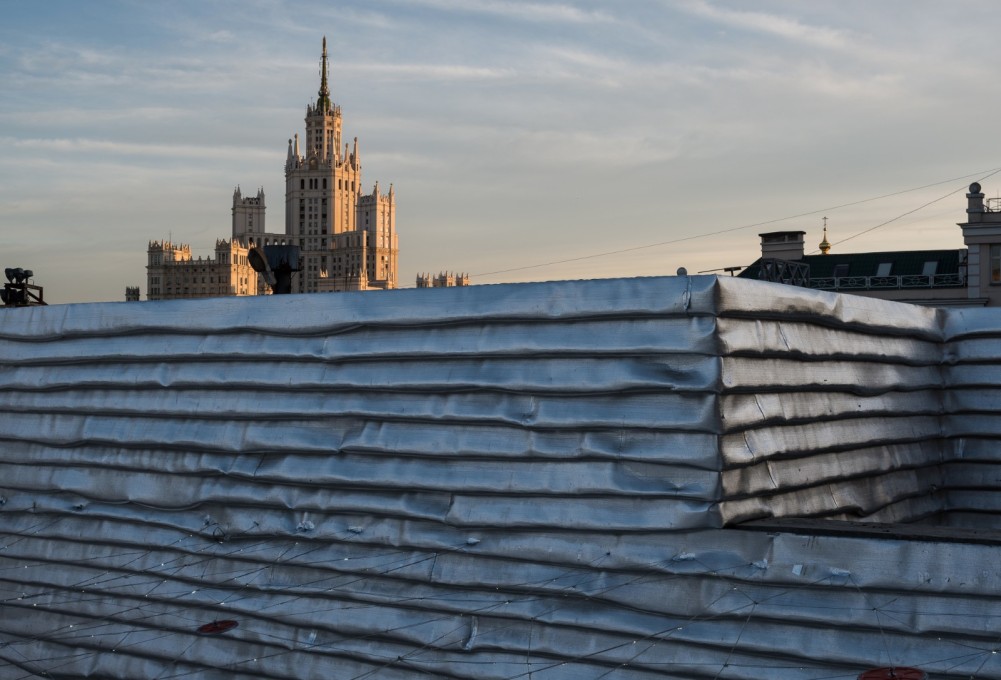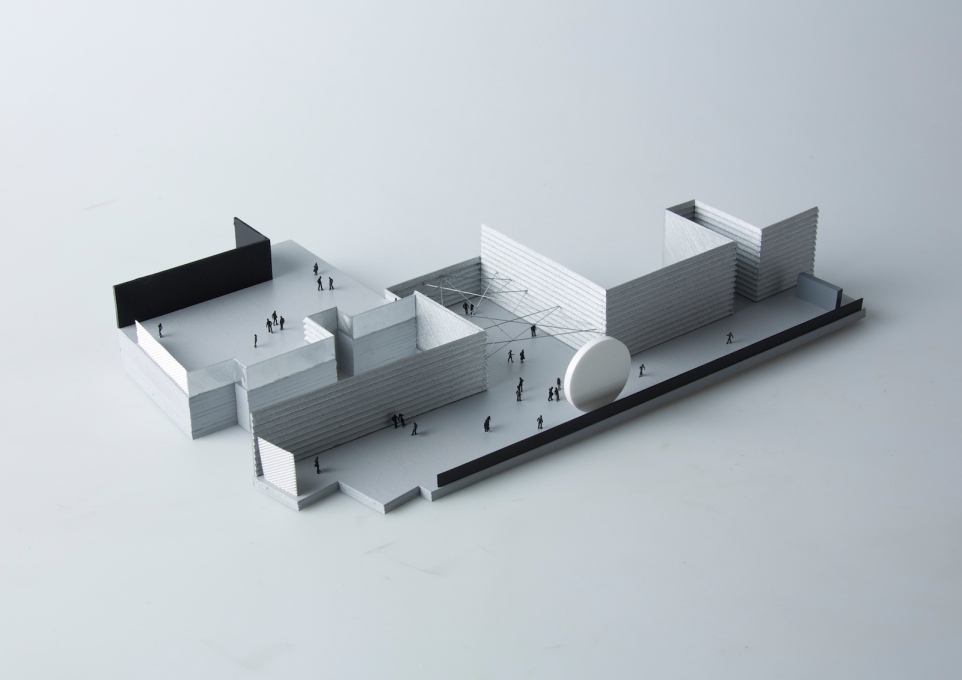This summer, an old factory site in central Moscow has been cleverly reworked – and reclad – as a temporary cultural centre and event space, prior to its demolition and commercial redevelopment. Luise Rellensmann reports on KOSMOS architects’ EMA project, which whilst it may prove ephemeral and act more as a PR stunt to increase the site’s redevelopment value by establishing its “hipster Stalinist” credentials, provides an imaginative alternative model for how USSR-era Moscow could be creatively and cheaply revitalised.
What greater pleasure could architects have than to spend their free time doing architecture as well? KOSMOS architects are a “virtual office” consisting of four Russian partners – each working for different architecture offices in Basel, New York and Moscow. Their previous on-the-side projects have included an arts pavilion in Gorky Park in Moscow in 2012, and the first-prize winning proposal for the Hans Christian Andersen Museum in Denmark.
With EMA, their latest architectural intervention, they have transformed an abandoned Soviet factory into a lively, summer-long cultural centre. The goal of the young architects is to re-anchor this urban fragment in the public memory and to enhance its use as a space. KOSMOS have accompanied their creative spatial intervention with a social media strategy. The latter acts as both upfront PR for the project but also acts as a means to create a longer term digital archive and record of it, important as the site is due for demolition and redevelopment at the end of the year, with investors planning a new apartment block on the site, which is situated in a 510 hectare ex-industrial district of Moscow that is being hyped as a new arts quarter, ArtKvartal.
EMA stands for Electrical Medical Apparatus, the company that developed the site in the 1950s and 1960s, which vacated it and relocated more than a decade ago. The complex is close to Moscow city centre, not far from the Stalinist “wedding-cake” skyscraper cluster known as the “Seven Sisters”. Drawing inspiration from the makeshift aesthetics that prevailed in many aspects of culture during the Soviet era, KOSMOS has experimented with the use of ordinary DIY materials for EMA – such as electric cables, sprinkler systems, strings of lights, reflectors and insulation foil – combining them together through sophisticated juxtapositions.
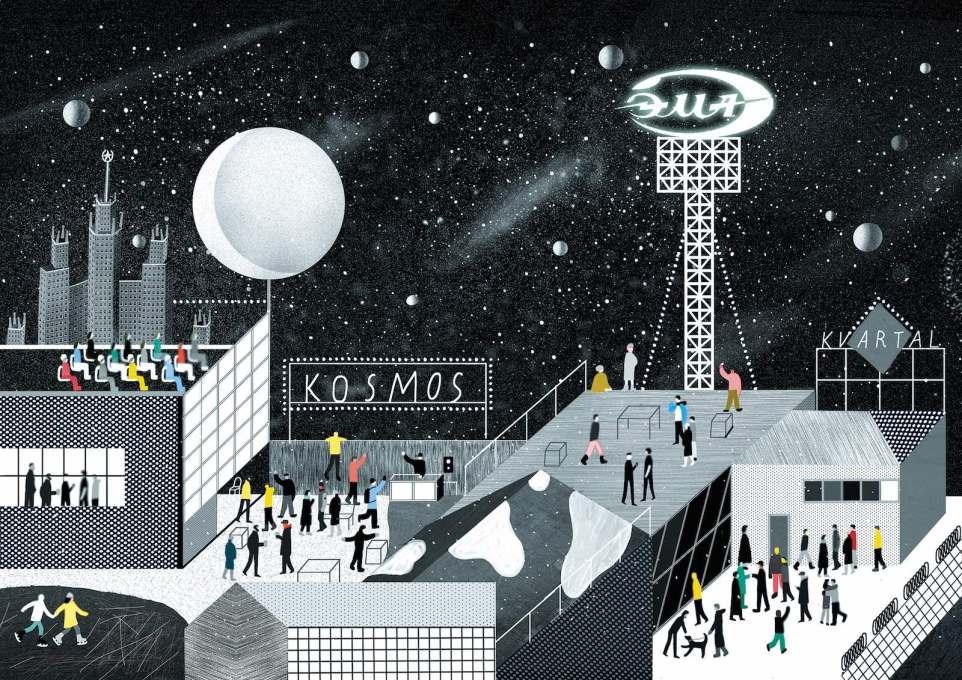
There are four central elements to the project’s design, lending the space a surreal theatricality: the existing buildings wrapped in folded foil; a web of cables and lights spanned across the courtyard; the re-use of the original company’s advertising signs; and an oversized, freestanding sculptural disk.
The most immediately striking of these interventions is the buildings’ silver cladding: their shiny façades, made from pipe insulation foil, simultaneously preserving the fabric of these industrial near-ruins while creating a unique reflective backdrop to the exterior spaces.
Twinkling like a starry firmament is the “infrastructural sky”, a network of cables, lights, loudspeakers and sprinklers spans across the main courtyard, a space where a wide range of events from concerts to workshops are being held. This exposed web of components alludes to the technical infrastructure commonly hidden within ceilings. The most graphic element of this pop-up space is the nine metres high moon-like disk, painted with reflective traffic-marking paint, its lunar-likeness often increased at night through cratered projection. This “moon” quickly became a social media icon, both in itself and as a popular backdrop for a multitude of selfies captured on smartphones.
Meanwhile the re-installation of the EMA company’s original illuminated sign strongly signals and situates the project’s presence in its urban context, and inside, the buildings’ interior spaces remain largely unchanged in their original evocative if tatty condition.
While the EMA project is hardly a tribute to some golden socialist past, it certainly confronts and utilises it, as well as presenting an offbeat breathing space in the midst of the urban development pressures flattening large parts of USSR-era Moscow. With this project, KOSMOS sees parallels to the Strelka Insitute’s site – designed by OMA on Bolotny Island in Moscow utilising the old “Red October” chocolate factory – and similarly intended for demolition in 2010 but ultimately preserved.
While here the project may just have acted as a PR outrider to establish the “hipster Stalinist” credentials of the area, increasing its commercial development value, this is a powerful model for how to reimagine the ex-industrial spaces of the city.
– Luise Rellensmann Translation from German by Alisa Anh Kotmair.
k-s-m-s.com




